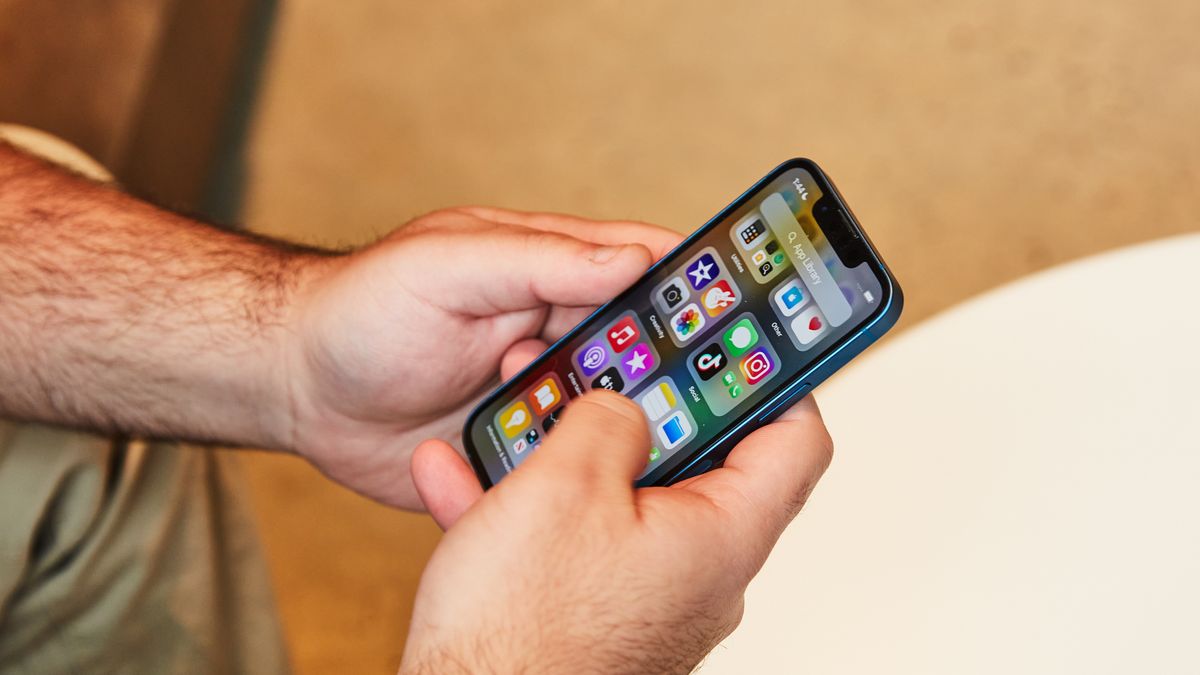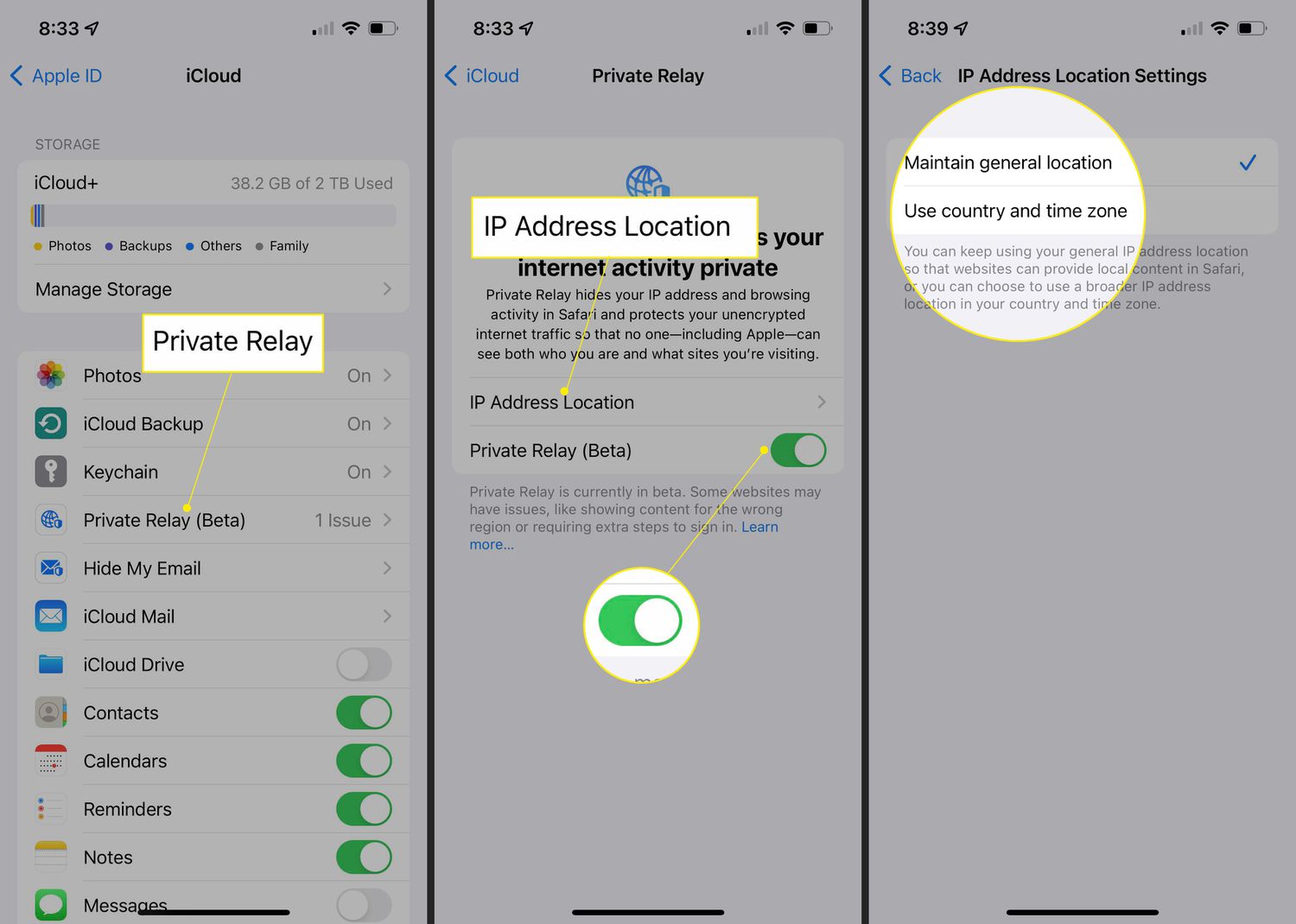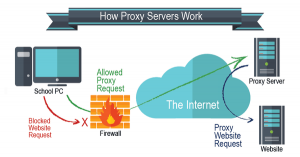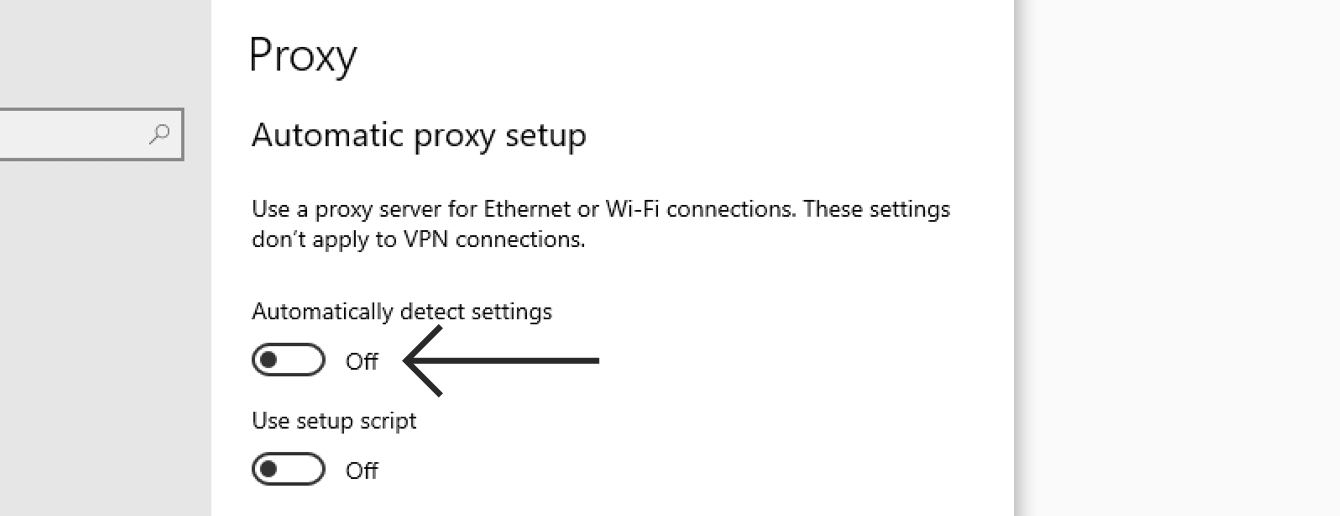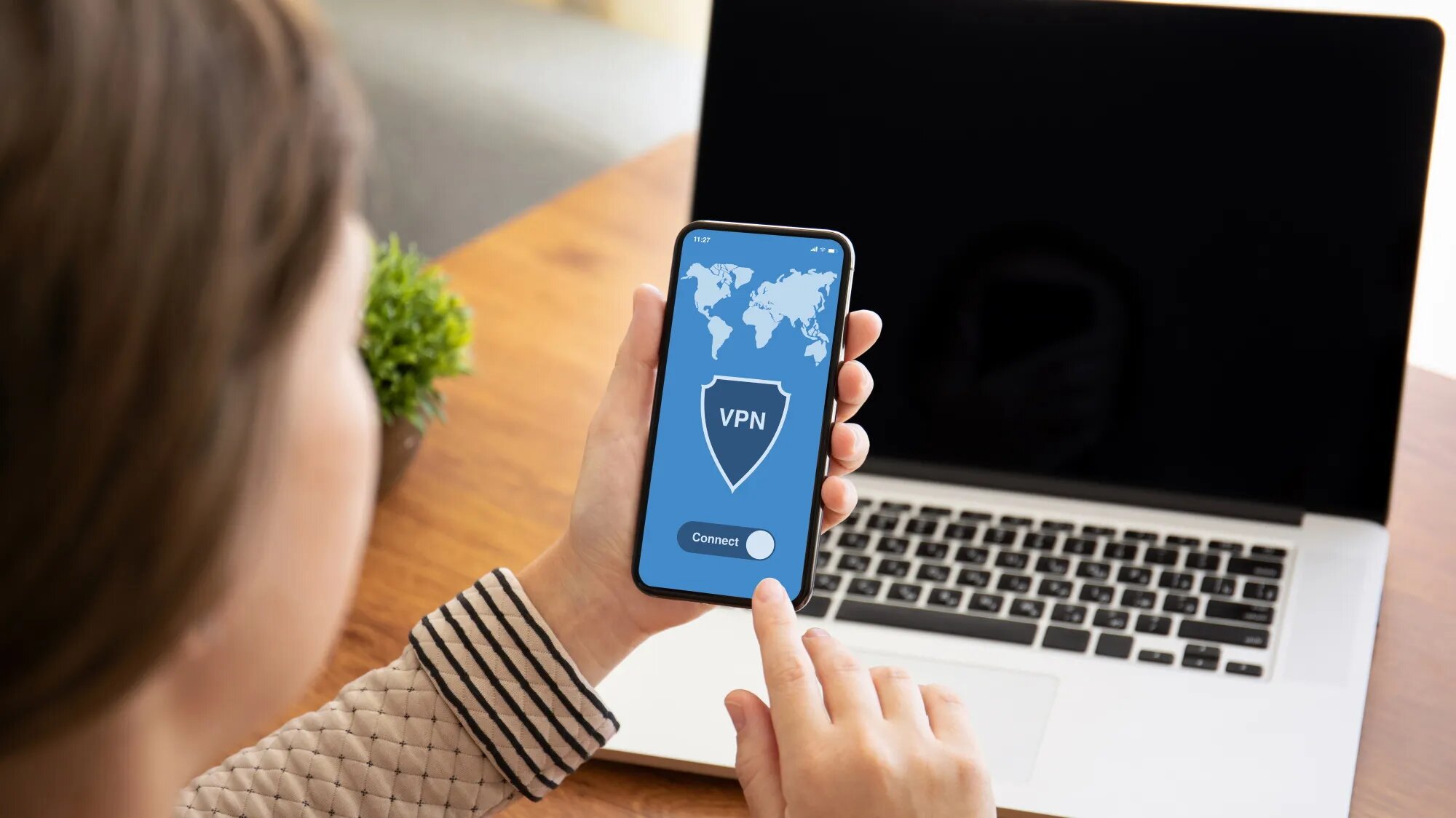Introduction
Welcome to the world of proxy servers! If you’re wondering how to find the proxy server address on your phone, you’ve come to the right place. Proxy servers play a crucial role in maintaining online privacy, improving security, and enabling access to restricted websites. Whether you’re a tech enthusiast, a curious mind, or simply someone looking to troubleshoot network issues, understanding how to locate your proxy server address is essential.
Before diving into the methods of finding the proxy server address on your phone, let’s first explore what a proxy server actually is.
A proxy server acts as an intermediary between your device and the internet. When you request access to a website, your device sends the request to the proxy server, which then forwards it to the website on your behalf. This process helps protect your identity, as the website sees the request coming from the proxy server, not your device. Additionally, proxy servers can cache data, enhance security by filtering malicious content, and enable access to geo-restricted or blocked websites.
Now, you might be wondering why you would need to find the proxy server address specifically on your phone. There can be a few reasons for this. Perhaps you’re experiencing connectivity issues, and you suspect that the proxy settings on your phone are causing the problem. Maybe you want to configure a specific proxy server for a particular app or service. Or, you may be experimenting with different proxy servers to enhance your online privacy or enable access to region-locked content.
In this article, we will explore several methods to help you find the proxy server address on your phone. We will cover both Wi-Fi and mobile network settings, as well as suggest using a proxy server finder app or contacting your network provider for assistance. By the end of this article, you will have a clear understanding of how to locate the proxy server address on your phone and be well-equipped to manage your online presence effectively.
What is a proxy server?
A proxy server is a crucial component of the internet infrastructure that acts as a middleman between your device and the internet. When you access a website, your device sends a request to the proxy server, which then forwards the request to the website on your behalf. The website sends the response back to the proxy server, which in turn sends it back to your device. This process creates a layer of separation between you and the website.
One of the primary functions of a proxy server is to enhance privacy. When you browse the internet through a proxy server, your IP address is hidden, and the website only sees the IP address of the proxy server. This helps protect your identity and provides a certain level of anonymity.
Proxy servers can also improve security by filtering incoming and outgoing traffic. They can act as a barrier between your device and potentially harmful content, helping to prevent malware, viruses, and other online threats from reaching your device. Some proxy servers even offer additional security features like encryption, further enhancing your online safety.
Additionally, proxy servers are commonly used to bypass geographical restrictions. For example, if a website or service is only available in a specific country, you can use a proxy server located in that country to access it. By connecting to the website through the proxy server, it appears as though you are accessing it from the desired location, enabling you to bypass regional restrictions.
Proxy servers can also be used to cache data, which can improve browsing speed and reduce bandwidth usage. When you access a website, the proxy server stores a copy of the website’s data. If another user requests that same data, the proxy server can serve it directly from its cache, eliminating the need to fetch it from the internet. This caching process can lead to faster load times for frequently accessed websites.
In summary, a proxy server acts as an intermediary between your device and the internet. It can enhance privacy, improve security, help bypass geographical restrictions, and accelerate browsing speed through data caching. Understanding the role and functionality of a proxy server is essential for managing your online presence effectively and utilizing its benefits to your advantage.
Why would you need to find the proxy server address on your phone?
There are several reasons why you might need to find the proxy server address on your phone. Let’s explore a few common scenarios where this information becomes essential.
1. Network Troubleshooting: If you’re experiencing connectivity issues, finding the proxy server address can help identify if the proxy settings on your phone are causing the problem. By checking and configuring the correct proxy server settings, you can potentially resolve network issues and regain smooth internet access.
2. Enhanced Online Privacy: Configuring a specific proxy server on your phone allows you to route your internet traffic through that server. This can help protect your privacy by masking your IP address and making it difficult for websites to track your online activities.
3. Bypassing Geo-restrictions: Some websites or online services may be restricted based on your geographical location. By finding and using a proxy server address from a different location, you can bypass these restrictions and access region-locked content. This can be particularly useful when traveling or when you want to access content that is not available in your country.
4. Securing Sensitive Data: Using a proxy server with encryption capabilities can add an extra layer of security when connecting to public Wi-Fi networks. By routing your internet traffic through a secure proxy server, you can protect your sensitive information, such as passwords or banking details, from potential hackers.
5. Monitoring Internet Usage: In certain organizations or households, proxy servers are used to monitor and filter internet usage. By finding the proxy server address on your phone, you can ensure that your internet activities comply with any restrictions or guidelines set by the network administrator.
6. Customizing App or Service Proxy Settings: Some apps or services may have specific proxy server requirements. By finding the proxy server address on your phone, you can configure individual proxy settings for these apps or services, ensuring they function correctly and securely.
Remember, finding the proxy server address on your phone is essential if you want to make use of the various benefits that proxy servers provide. Whether it’s for troubleshooting network issues, enhancing privacy, bypassing geo-restrictions, securing sensitive data, monitoring internet usage, or customizing app settings, knowing how to locate the proxy server address can be a valuable skill in today’s digital world.
Method 1: Checking the Wi-Fi network settings
One of the most straightforward methods to find the proxy server address on your phone is by checking the Wi-Fi network settings. This method is applicable if you are connected to a Wi-Fi network that utilizes a proxy server. Here’s how you can do it:
- Open the Settings app on your phone and navigate to the Wi-Fi settings.
- Find the Wi-Fi network you are connected to and tap on it.
- A screen with the Wi-Fi network details will appear. Look for the “Proxy” or “Proxy Settings” option.
- If a proxy server is configured, you will see the proxy server address and port number listed here. Take note of this information.
- Once you have the proxy server address and port number, you can use this information to configure proxy settings for other apps or services, if desired.
It’s important to note that not all Wi-Fi networks employ proxy servers. If you don’t see any proxy settings listed in the Wi-Fi network details, it means that the network you’re connected to does not utilize a proxy server.
If you’re experiencing network issues or want to enhance your privacy, it’s worth checking the Wi-Fi network settings to see if a proxy server is being used. Finding the proxy server address through this method can help you troubleshoot any connectivity issues and take advantage of the benefits that proxy servers provide.
Method 2: Using a proxy server finder app
If you’re unable to find the proxy server address through the Wi-Fi network settings or if you’re looking for alternative proxy server options, using a proxy server finder app can be a convenient solution. These apps are designed to help you discover and connect to proxy servers with ease. Here’s how you can use a proxy server finder app:
- Search for a reliable proxy server finder app in your device’s app store or marketplace. There are various options available for both iOS and Android devices.
- Download and install the app on your phone.
- Open the app and explore the available features and settings.
- Using the app, you can search for proxy servers based on location, speed, reliability, or other criteria.
- The app will provide you with a list of proxy servers along with their respective addresses and ports.
- Select a proxy server from the list that suits your requirements.
- Configure the proxy server settings on your phone by entering the address and port number provided by the app.
- Once the settings are configured, your phone will route the internet traffic through the selected proxy server.
Proxy server finder apps make it easy to discover and connect to proxy servers without the need for manual configuration. They provide a user-friendly interface and often offer additional features such as built-in encryption or automatic server selection based on your location or requirements.
Do keep in mind that some proxy server finder apps may require a subscription or offer premium features. It’s advisable to read reviews, compare different apps, and choose one that aligns with your needs and preferences.
Using a proxy server finder app can be an efficient way to find and connect to proxy servers on your phone. It allows you to customize your proxy server settings based on your preferences and provides an excellent option if the Wi-Fi network settings method is not sufficient or convenient for your specific requirements.
Method 3: Checking mobile network settings
If you’re unable to find the proxy server address on your phone through the Wi-Fi network settings, you can try checking the mobile network settings. This method is applicable if you’re using a mobile data connection and want to determine if a proxy server is being utilized. Here’s how you can do it:
- Open the Settings app on your phone and go to the Network or Connection settings.
- Look for the Mobile Network settings or Cellular Data settings.
- In the mobile network settings, search for the “Proxy” or “Proxy Settings” option. Note that the terminology may vary depending on your device and operating system.
- If there is a proxy server configured for your mobile network, the proxy server address and port number will be displayed here.
- Make note of the proxy server address and port number, as you may need it to configure proxy settings for specific apps or services.
- If you don’t see any proxy settings listed in the mobile network settings, it means that your mobile data connection does not utilize a proxy server.
It’s important to note that not all mobile data connections use a proxy server. Some network providers may use other methods to ensure a secure and reliable connection without the need for a proxy server.
If you’re experiencing network issues or want to customize your proxy settings while using a mobile data connection, it’s worth checking the mobile network settings to see if a proxy server is being used. Finding the proxy server address through this method can help you troubleshoot any connectivity issues or configure your proxy settings for optimal performance.
Method 4: Contacting your network provider
If you’re unable to find the proxy server address on your phone using the previous methods or if you’re facing specific network configuration challenges, contacting your network provider is an effective solution. Network providers have access to the necessary infrastructure and can provide you with the proxy server address and any relevant settings specific to their network. Here’s how you can go about contacting your network provider:
- Locate the customer support contact information for your network provider. This can usually be found on their website, billing statements, or through a quick internet search.
- Reach out to the customer support team via phone, email, or live chat, depending on their available communication channels.
- Explain your query regarding the proxy server address on your phone and request assistance in obtaining the necessary information.
- The customer support representative will guide you through the process and provide you with the proxy server address, along with any additional instructions or settings you may need.
- Take note of the proxy server address and port number provided by the network provider. This information will be needed to configure proxy settings on your phone.
Contacting your network provider is particularly useful if you’re facing difficulties in locating the proxy server address, or if your network has specific proxy configurations that are not typically found in standard settings menus on your device. The network provider’s support team will have access to the necessary information to assist you effectively.
Keep in mind that the specific process and information provided by different network providers may vary. Therefore, it’s essential to follow the guidance and instructions given by your network provider’s customer support team.
By reaching out to your network provider, you can ensure that you have the most accurate and up-to-date information regarding the proxy server address and any relevant settings specific to their network. This method can help you utilize the benefits of a proxy server while maintaining a reliable network connection.
Conclusion
Finding the proxy server address on your phone is an important skill that can help you troubleshoot network issues, enhance privacy, bypass geographical restrictions, and customize proxy settings for specific apps or services. In this article, we explored several methods to assist you in locating the proxy server address on your phone.
First, we discussed the method of checking the Wi-Fi network settings. By navigating to the Wi-Fi settings on your phone, you can find the proxy server address if it’s configured for the Wi-Fi network you’re connected to. This method provides a straightforward way to access the proxy server address.
Next, we explored the option of using a proxy server finder app. These apps simplify the process of discovering and connecting to proxy servers by providing a user-friendly interface and various search criteria. Proxy server finder apps are convenient tools that allow you to customize your proxy server settings based on your preferences.
We also discussed checking the mobile network settings, which is applicable if you’re using a mobile data connection. By accessing the mobile network settings on your phone, you can determine if a proxy server is being used and obtain the necessary address and port details.
Additionally, we highlighted the importance of contacting your network provider. If you’re unable to find the proxy server address using the previous methods or if you require specific network-related information, reaching out to your network provider’s customer support can provide you with the most accurate and relevant details.
By utilizing these methods, you can effectively find the proxy server address on your phone and leverage the benefits that proxy servers offer, such as enhanced privacy, bypassing geo-restrictions, and securing your internet connection.
Remember, the process of finding the proxy server address may vary depending on your device and network settings. It’s recommended to follow the specific instructions for your phone and consult online resources or customer support if needed.
Now that you have a better understanding of how to locate the proxy server address on your phone, you can take control of your online presence, improve your security, and enjoy the flexibility that proxy servers provide.







